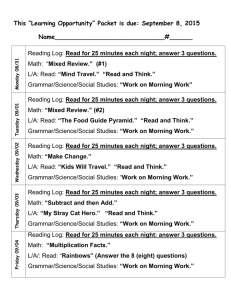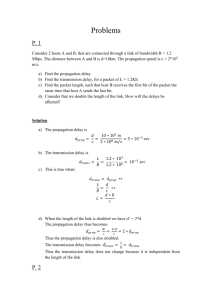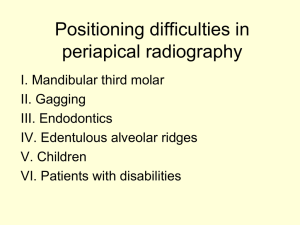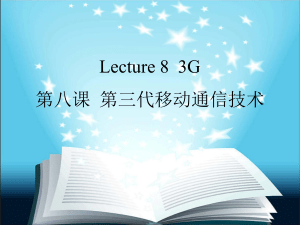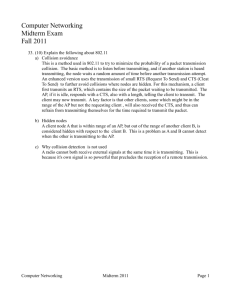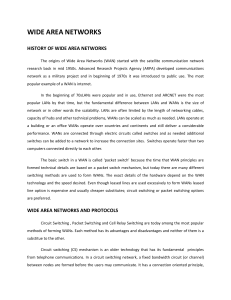R14. 2 users can be supported because each user requires half of
advertisement
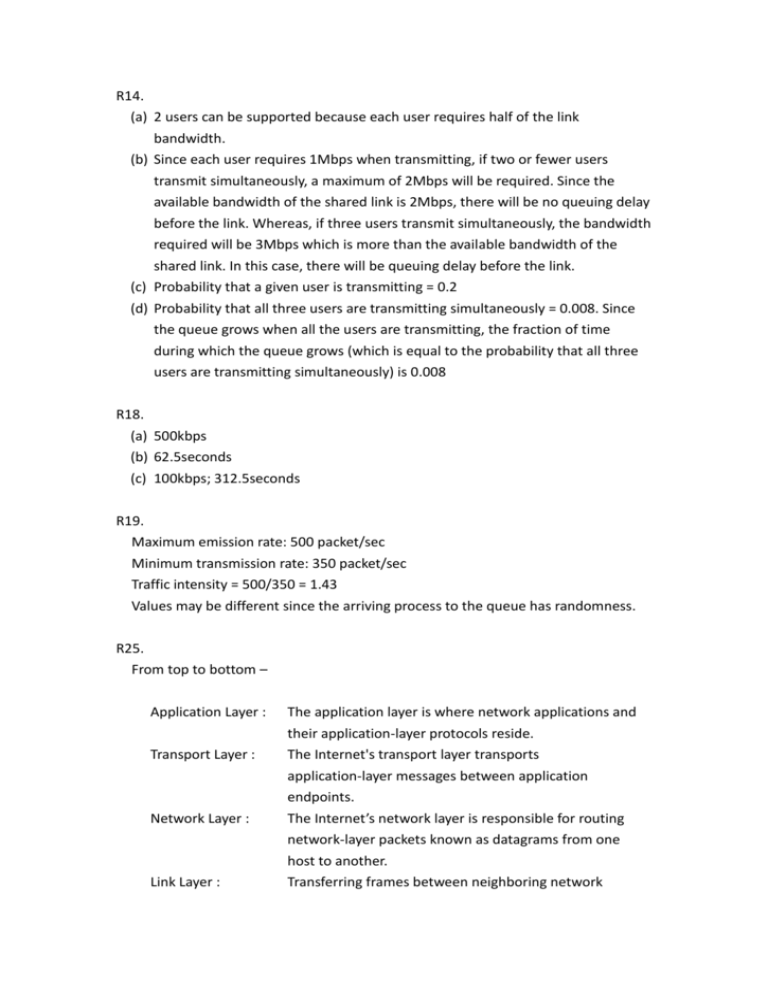
R14. (a) 2 users can be supported because each user requires half of the link bandwidth. (b) Since each user requires 1Mbps when transmitting, if two or fewer users transmit simultaneously, a maximum of 2Mbps will be required. Since the available bandwidth of the shared link is 2Mbps, there will be no queuing delay before the link. Whereas, if three users transmit simultaneously, the bandwidth required will be 3Mbps which is more than the available bandwidth of the shared link. In this case, there will be queuing delay before the link. (c) Probability that a given user is transmitting = 0.2 (d) Probability that all three users are transmitting simultaneously = 0.008. Since the queue grows when all the users are transmitting, the fraction of time during which the queue grows (which is equal to the probability that all three users are transmitting simultaneously) is 0.008 R18. (a) 500kbps (b) 62.5seconds (c) 100kbps; 312.5seconds R19. Maximum emission rate: 500 packet/sec Minimum transmission rate: 350 packet/sec Traffic intensity = 500/350 = 1.43 Values may be different since the arriving process to the queue has randomness. R25. From top to bottom – Application Layer : Transport Layer : Network Layer : Link Layer : The application layer is where network applications and their application-layer protocols reside. The Internet's transport layer transports application-layer messages between application endpoints. The Internet’s network layer is responsible for routing network-layer packets known as datagrams from one host to another. Transferring frames between neighboring network elements. Physical Layer : P5. (a) (b) (c) (d) (e) (f) Moving the individual bits within the frame from one node to the next. dprop = m/s seconds dtrans = L/R seconds dend-to-end = (m/s + L/R) seconds The bit is just leaving Host A. The first bit is in the link and has not reached Host B. The first bit has reached Host B. (g) P7. Consider the first bit in a packet. Before this bit can be transmitted, all of the bits in the packet must be generated. This requires The time required to transmit the packet is Propagation delay = 2 msec The delay until decoding is P12. The first end system requires L/R1 to transmit the packet onto the first link; the packet propagates over the first link in d1/s1; the packet switch adds a processing delay of dproc; after receiving the entire packet, the packet switch requires L/R2 to transmit the packet onto the second link; the packet propagates over the second link in d2/s2. Adding these five delays gives To answer the second question, we simply plug the values into the equation to get 8 + 8 + 16 + 4 + 1 = 37 msec P21. (a) ttrans = 40000 / 1x106 = 0.04sec = 40msec tprop = 10000x103 / 2.5x108 = 0.04sec = 40msec (ttrans + tprop x 2) x 10 = (40 + 40 x 2) x 10 = 1200msec = 1.2sec (b) ttrans x 10 + tprop = 440msec (c) In (a), it takes more time than in (b) since it waits for the acknowledgement packet from receiver. P24. (a) (b) (c) (d) P26. Yes. Adding the propagation delay increases end-to-end delay both in packet switching and message switching.



